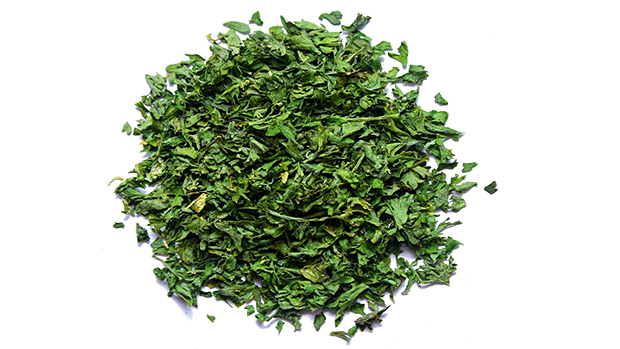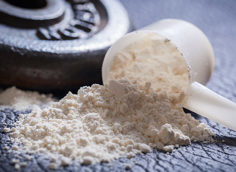There are actually a number of natural anabolic substances found in nature, often in things that are edible, or supposedly edible. Most of the time, though, the effective human dosage of these anabolic substances is plain silly.
For instance, tomatoes contain something called tomatidine, but you'd have to eat platefuls of tomatoes, washed down with flagons of ketchup and V8 juice for it to have any chance of helping you build some tomatoey-good muscles.
But a new natural anabolic has just surfaced and unlike most of its brethren, the effective human dosage extrapolated from studies on mice looks to be quite small and reasonable.
The reason it escaped our notice is because it's found in parsley, the stuff roadside diners place atop their thin, gray, horsemeat steaks to pretty them up. I mean, how were we to know? No one actually eats parsley and there's probably a discarded pile of it somewhere as high as the Chrysler building.
But some Korean researchers started feeding this anabolic substance, a polyphenol known as apigenin, to mice and holy smokes, it blew up their quads and increased their running performance.
Apigenin is found in parsley, but also in smaller quantities in celery, oranges, grapefruit, and chamomile. It's been shown in experiments to suppress the progression of prostate cancer and colon cancer, improve memory (at least in animals), ameliorate insulin resistance, and inhibit the conversion of testosterone to estrogen.
Clearly it's useful, but no one had ever tested its effects on skeletal muscle hypertrophy and myogenic differentiation before until the aforementioned Korean researchers put together their experiment.
The researchers procured some mice and split them up into three groups. The first group got a daily low dose of apigenin while the second group got a daily high dose. The third group just ate their normal food and watched Stuart Little on Netflix.
After 7 weeks, the mice were made to run to exhaustion on a treadmill. Researchers also examined the size of their quadriceps, tibialis anterior, gastrocnemius, and triceps.

The mice that ingested the most apigenin performed the best on the treadmill test while the group that received a middlin' amount of the compound did the next best. Additionally, the mice that got the most apigenin grew the biggest quads. For some reason, though, the other muscles measured didn't reflect similar growth.
The researchers wrote that the compound "...induces myogenic differentiation by regulating Prmt7-p38-myoD and the Akt-S6K1 pathway in C2C12 cells." They also described several more chemical pathways, any one of which would make an excellent password for your official David Hasselhof fan page log-in.
In short, apigenin increased production of contractile muscle proteins, anabolic hormones IGF-1 and 2, and PGC-1-alpha, the master regulator of mitochondrial biosynthesis.
Normally, I might balk at recommending that people actually eat parsley to grow muscle, but given that the effective dosages appear to be so comparatively low, it might be an idea worth experimenting with.
A cup of chopped parsley has about 180 mg. of apigenin, so each tablespoon would contain about 10 mg. of the polyphenol.
The human equivalent of the dosages used is 20 to 40 mg. (20 for the low-dosage group and 40 for the high), so using 2 to 4 tablespoon of fresh parsley every day in soups, atop sandwiches, blended up in your protein shakes, or just eaten plain may actually increase performance or muscle size (all other factors being optimum, of course).
Luckily, apigenin appears to exist quite nicely in dried parsley, too, one report suggesting that by weight, dried parsley is 4.5% apigenin. That means that roughly one tablespoon a day should approximate the dosages used in the experiment.
- Apigenin, a natural anabolic compound in parsley. Ergo-log. January 24th, 2018.
- Young JJ et al. Apigenin enhances skeletal muscle hypertrophy and myoblast differentiation by regulating Prmt7. Oncotarget. 2017 Oct 3;8(45):78300-78311. PMC.



